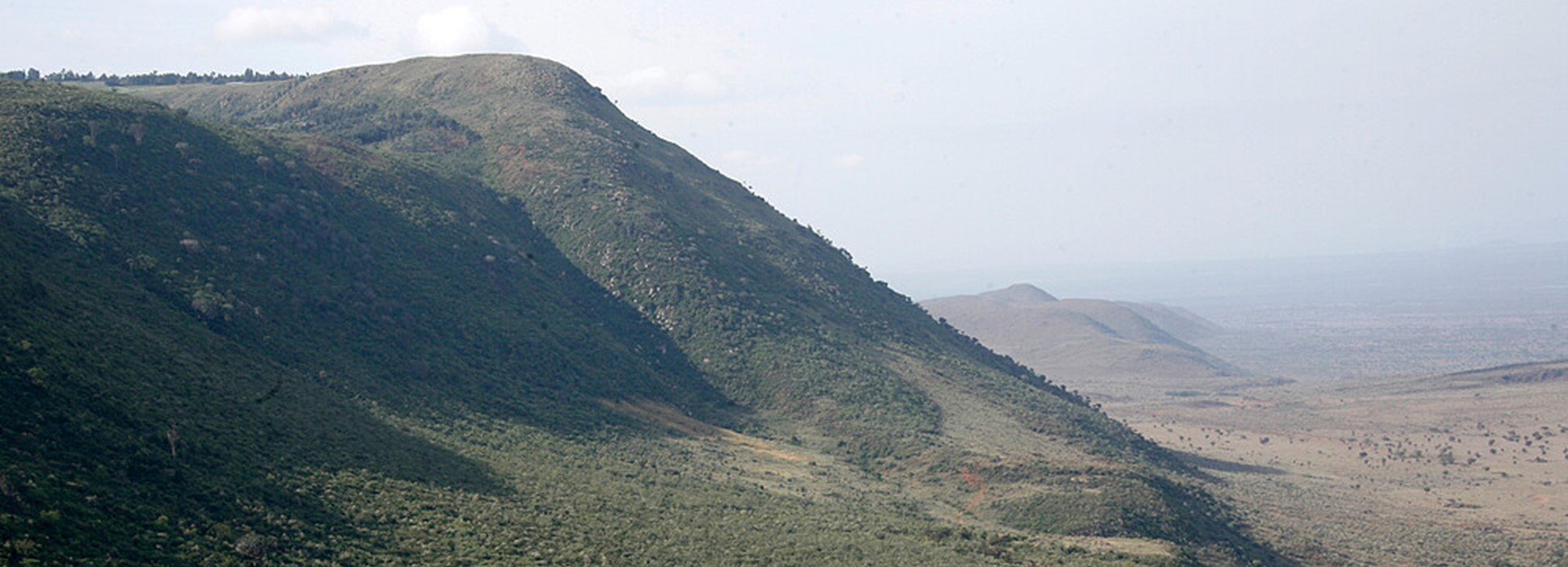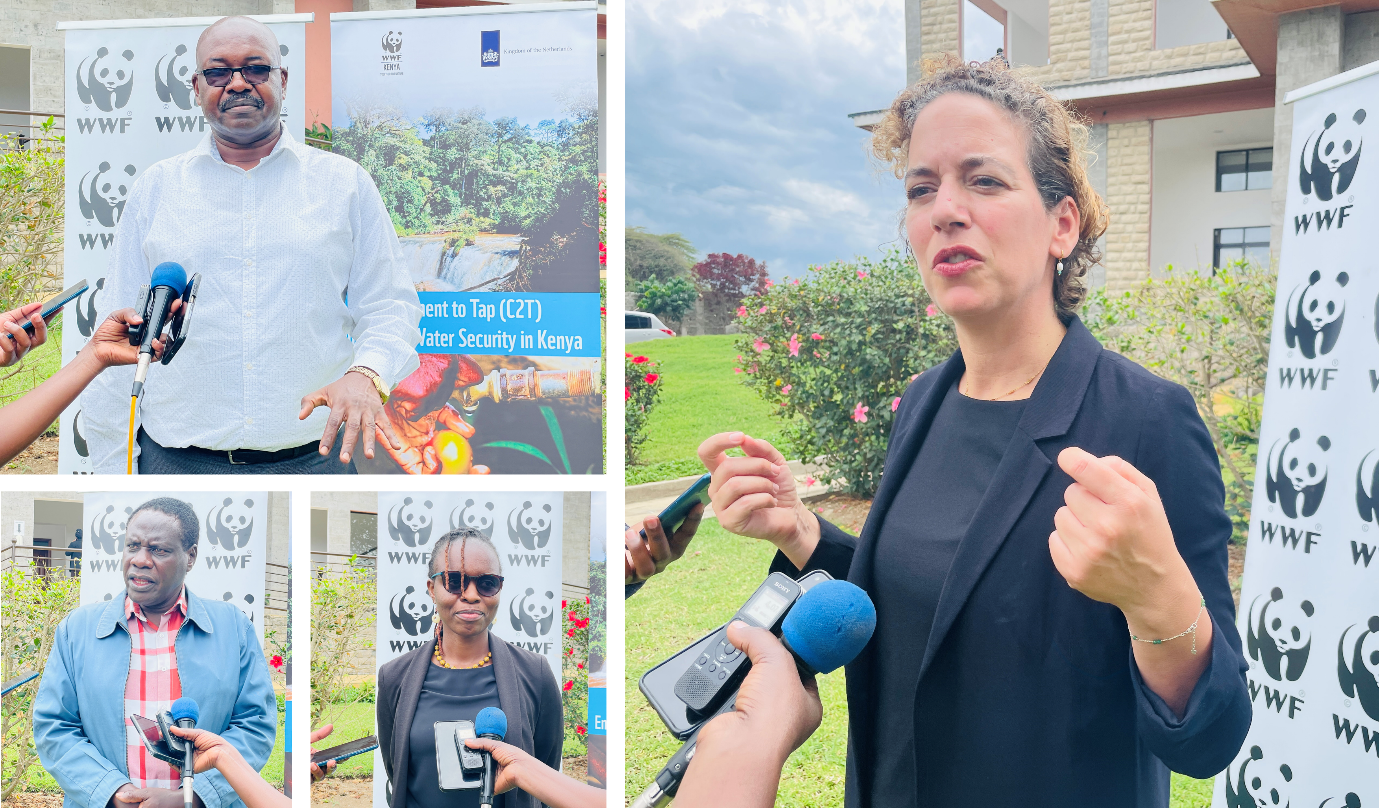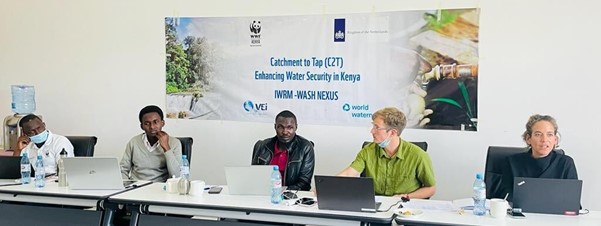Launch of the Catchment to Tap (C2T) project in Kenya
21 December 2021Last week, a newly formed consortium celebrated the launch of the C2T project in Kenya. The five-year IWRM project, funded by the Dutch Government, is led by WWF-Kenya, and implemented in partnership with World Waternet, VEI, Acacia Water, Egerton University, KEWASNET and many other dedicated water stakeholders in Kenya.
 IWRM
IWRM
C2T aims to create a linkage between IWRM and WASH, while also addressing emerging challenges to water use and exploitation in key catchment areas in Kenya. The project is designed to strengthen policies and institutions in Kenya, in particular, to increase visibility and priority of an IWRM approach and respond to the Water Act 2016 by enabling more coordinated, effective, and transparent management of IWRM at catchment level.
Official launch
Dr. William Ojwang, WWF’s C2T Project Lead, explains that the initiative will help address key threats to water sources, including catchment degradation, unsustainable land use and practices, increased pollution, deforestation and the adverse effects of climate change. Through enhanced collaborative approach with both national and county governments, the consortium will address key issues by raising awareness of the need to protect water catchment areas, building capacity for relevant government agencies and personnel, and knowledge sharing to ensure informed and timely interventions.
 Marieke van Nood, Regional Manager East Africa & Asia, stressed the importance of more people and water users taking collective action in IWRM and also understand that water does not come from the tap but from the catchment areas.
Marieke van Nood, Regional Manager East Africa & Asia, stressed the importance of more people and water users taking collective action in IWRM and also understand that water does not come from the tap but from the catchment areas.
Rose Makenzi, a Senior Embassy Officer, said the project will address the concerns of increased water demands for growing agricultural practices, industries and increased water consumption due to unprecedented population growth and urbanization along major catchment areas.
Water Resources Authority (WRA) Senior Manager, John Kinyanjui, welcomed the support, noting that the country has been identified as water stressed and therefore the conservation of key catchment areas is crucial in ensuring clean and quality water for all.
Geographic focus
World Waternet and its consortium partners will be able to leverage existing work through the current and long-term WaterWorX and Blue Deal projects in Upper Tana Basin (Thika catchment), Great Rift Valley Basin (Nakuru County), and Lake Victoria South Basin (Homa Bay County). However, Catchment to Tap has a national scope and will be supporting demonstration projects on IWRM interventions across the country.
